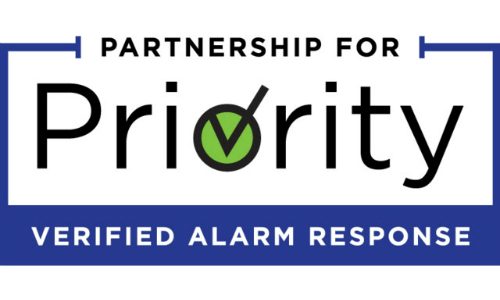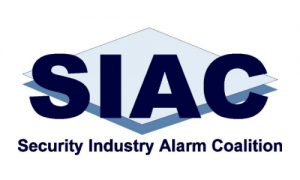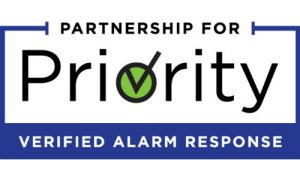What is the Partnership for Priority Verified Alarm Response (PPVAR)?

By: Jon Polly | Dec 02, 2020
 Intrusion alarms offer crime prevention and emergency notification in the event of a break in, but they are also a source of nuisance alarms. Have nuisance alarms caused police officers to become complacent? Years ago, I was a police officer in a major metropolitan city. My district alone (1 of 12) received over 40 alarms in an 8 hour shift, every day. Triple that number if a thunderstorm came through the city. Not one officer ran emergency traffic to an intrusion alarm, unless there was a call from the homeowner in despair, a 911 hang-up, or some other verification confirmed the need. Alarm calls would sit in queue for at least 15 minutes and then officers had 45 minutes to arrive onsite. Many times the key holder would arrive long before we did. I responded to thousands of alarm calls in my years as a police officer, but less than 1% were truly emergency situations. Is it a surprise that emergency response is complacent?
Intrusion alarms offer crime prevention and emergency notification in the event of a break in, but they are also a source of nuisance alarms. Have nuisance alarms caused police officers to become complacent? Years ago, I was a police officer in a major metropolitan city. My district alone (1 of 12) received over 40 alarms in an 8 hour shift, every day. Triple that number if a thunderstorm came through the city. Not one officer ran emergency traffic to an intrusion alarm, unless there was a call from the homeowner in despair, a 911 hang-up, or some other verification confirmed the need. Alarm calls would sit in queue for at least 15 minutes and then officers had 45 minutes to arrive onsite. Many times the key holder would arrive long before we did. I responded to thousands of alarm calls in my years as a police officer, but less than 1% were truly emergency situations. Is it a surprise that emergency response is complacent?
Time for a Change

“In 1992, the International Association of Chiefs of Police (IACP) organization created the Private Sector Liaison Committee (PSLC) to develop strategies to address and reduce the mutual problem for chiefs and the alarm industry of excessive numbers of false alarms. Out of that committee came the ANSI CP-01 Control Panel Standard in 2000, the ECV 2-Call Verification Best Practice in 2001; in 2016 this would be changed to Enhanced Call Confirmation (ECC). “
By December 2002, the security industry came together and formed a permanent entity that could interface with law enforcement. This entity was the Security Industry Alarm Coalition.
 In 2012 Keith Jentoff and Don Young created the Partnership for Priority Video Alarm Response (PPVAR); a public private partnership that included law enforcement, insurance providers, and alarm companies to coordinate efforts to verify alarm activity, reduce false alarms, and increase apprehension rates and officer safety. In March 2015, PPVAR changed names to the Partnership for Priority Verified Alarm Response to take advantage of all technologies to verify an alarm, not just video.
In 2012 Keith Jentoff and Don Young created the Partnership for Priority Video Alarm Response (PPVAR); a public private partnership that included law enforcement, insurance providers, and alarm companies to coordinate efforts to verify alarm activity, reduce false alarms, and increase apprehension rates and officer safety. In March 2015, PPVAR changed names to the Partnership for Priority Verified Alarm Response to take advantage of all technologies to verify an alarm, not just video.
In 2018, multiple organizations approved a false alarm ordinance that could be used across the United States. This model ordinance also created the ANSI CS-V-01 Standard to require alarm monitoring companies to follow a standard when screening calls prior to requesting dispatch.
An important part of the PPVAR mission is to develop standards, recommendations, and education for making effective use of new technology and services, “especially when innovations challenge relationship norms between the alarm industry and Public Safety. PPVAR believes that Law Enforcement must be allowed to make use of appropriate technology with the proper safeguards.” “The PPVAR encourages clear and proactive communication of any relationships between public safety and private companies. PPVAR encourages transparency in those communications of the nature of the relationship and conditions and obligations of the involved parties”. The PPVAR is composed of volunteers with a passion to see priority response make a difference for their stakeholders and the consumer/citizen. Their efforts have resulted in a 75% or better false alarm reduction rate today.
What Makes a Verified Alarm?
A verified alarm is defined as either “crime in progress or high probability of a crime in progress.” The verification happens at the monitoring station. A verified alarm happens when a trained central station operator uses technology to determine that an event is a probable crime in progress. A verified alarm is a “force multiplier” for police departments. Once an alarm is verified, police officers are notified and should give higher priority responses to verified alarms. Without a verified alarm, many officers do get complacent in their response. Any tool that removes the element of surprise increases the property owner’s chance for a suspect to be caught and for the officer to go home at the end of the night.
 Advances in verifying alarms have allowed monitoring stations to increase accuracy of actual alarm calls. These advances are the building blocks that allow programs like The Monitoring Association‘s (TMA) Automated Alarm Secure Protocol (ASAP) and Public Safety Answering Point (PSAP) to work. Automated Alarm Secure Protocol (ASAP) was launched in 2011 as a way to connect police departments directly to the monitoring stations through the Computer Aided Dispatch (CAD) software that 911 operators use to dispatch calls for service. As verification occurs, the monitoring station operator sends the verified call to the Public Safety Answering Point (PSAP), reducing the time for input between monitoring operator and 911 operator from minutes to an average of 3 seconds. Time is commodity for ensuring safety, and the more there is, the more property owners and police officers’ profit.
Advances in verifying alarms have allowed monitoring stations to increase accuracy of actual alarm calls. These advances are the building blocks that allow programs like The Monitoring Association‘s (TMA) Automated Alarm Secure Protocol (ASAP) and Public Safety Answering Point (PSAP) to work. Automated Alarm Secure Protocol (ASAP) was launched in 2011 as a way to connect police departments directly to the monitoring stations through the Computer Aided Dispatch (CAD) software that 911 operators use to dispatch calls for service. As verification occurs, the monitoring station operator sends the verified call to the Public Safety Answering Point (PSAP), reducing the time for input between monitoring operator and 911 operator from minutes to an average of 3 seconds. Time is commodity for ensuring safety, and the more there is, the more property owners and police officers’ profit.
Why it Matters to Integrators
Many security integrators rely on alarm (intrusion and / or fire) for recurring revenue. A perfect alarm system is one that never causes a service issue and brings recurring monthly revenue (RMR) for the integrator. But, in an industry where almost all security integrators provide some type of alarm offering, how does an integrator stand out? Verified alarms offer the customer reduced false alarms and real-time information to the monitoring center, 911 dispatch, and police officers. A verified alarm brings more value to the customer. Many integrators have also found that they can charge a higher monthly monitoring fee for verified alarm services.
As the security industry changes with the incorporation of more IoT devices, the integrator will have additional sensors that will connect to alarm panels that can provide verification. These additional sensors can offer additional upsell opportunities for the integrator.
Conclusion
The Partnership for Priority Verified Alarm Response (PPVAR), Security Industry Alarm Coalition (SIAC), and The Monitoring Association (TMA) has changed the alarm industry and public safety for the better. Apart, these organizations have created advances in the alarm industry. When these advances are put together; the public, first responders, property owners, insurance carriers, and the security integrator all profit.

